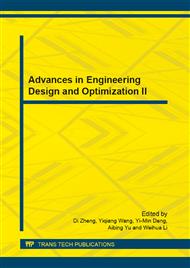p.922
p.926
p.930
p.934
p.938
p.942
p.946
p.950
p.954
Edge Design for Regrinding Cutting Tool
Abstract:
Regrinding of wasted cutting tools can recycle resources and decrease manufacturing costs. Influence of relative tool sharpness and tool cutting edge angle on tool edge radius were analyzed. Cutting force and cutting temperature were simulated with FEM on different edge radius. Edge preparation experiments were carried out though an abrasive nylon brushing method. The results show that RTS and cutting edge angle have influence on edge radius. Small edge radius might result in small cutting forces and lower average temperatures, could maintain the cutting state between tool and workpiece. The cutting edge defects can be eliminated through edge preparation, and a smooth cutting edge can be obtained. Cutting tool life will be improved through proper edge design and edge preparation.
Info:
Periodical:
Pages:
938-941
Citation:
Online since:
September 2011
Authors:
Price:
Сopyright:
© 2012 Trans Tech Publications Ltd. All Rights Reserved
Share:
Citation:


